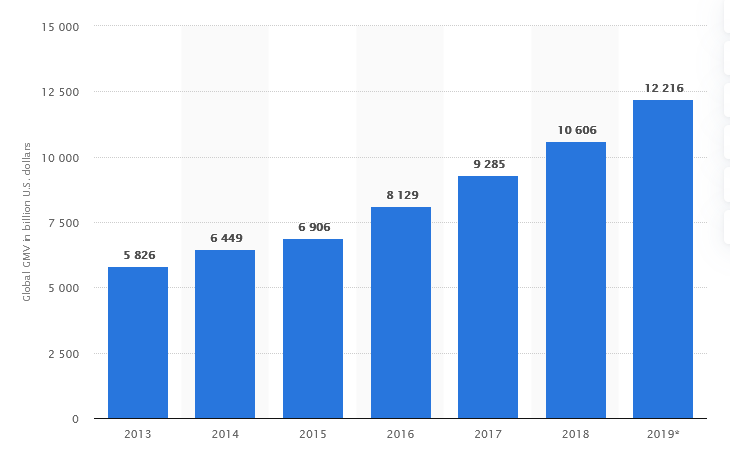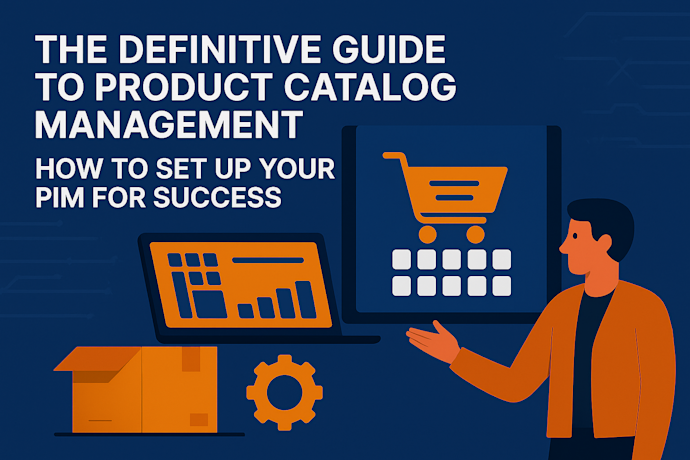The sheer volume of buying and selling between business can often go under the radar as advertising space predominantly used by consumer brands reaches out for our attention at every turn. It’s worth remembering that the B2B ecommerce market in 2019 valued $12.2 trillion and was 6 times that of B2C.

Source: Stastica In-depth: B2B e-Commerce 2019
Why Modern B2B Ecommerce Needs a Consumer-First Approach
Consumer-like experiences
The no frills approach to branding has been the standard for B2B throughout the ages. Standing defiantly against ascetically pleasing UX was done in the name of no-nonsense efficiency until we went online and got the data back. This showed us without doubt that the type of design and customer journey enjoyed by consumers also converted the most business savvy of us into sales.
It’s no wonder that we are seeing data driven B2B designs looking more like highstreet brands with ecommerce now able to sell to any online markets. The printed catalogue, call centre and sales rep. will remain strong commerce channels while a new generation of buyers will expect an online UX that reflects a familiar B2C experience.
Customer personalisation
The relationship between buyer and seller has stood as the cornerstone of B2B commerce and quite often the reason why companies have prioritised person to person interactions. Instantly responding to each buyer as someone with individual needs and a history of customer loyalty is now possible online using PIM platforms like Pimcore.
Recommendations for products and bundles is only the beginning for B2B ecommerce personalisation. Going to wherever the customer is using a multi-channel strategy while contextualising product information can be now streamlined with Product Information Management tools. This makes account specific store fronts, dynamic pricing and custom catalogues an operational possibility.
Direct to consumer
Companies whose business models have usually only catered for B2B sales are now offering their products direct to consumer. This is a highly evolved business model has avoided conflict of interest with retailers in the main by not completing on price and offering different stock.
Heinz started to sell direct to customer for the first time during lockdown when buying food became more of a priority.

Brands like Gymshark and Dollar Shave Club have taken the initiative as startups to go D2C thanks to ecommerce with B2B wholesalers and manufactures taking note. Lego are one of the most visible examples of a brand having a powerful B2C revenue stream while still stocking other retailers with their vast and fast growing inventory.
Online marketplaces
Amazon, eBay and Alibaba continue to dominate ecommerce worldwide. They are hard to ignore as they consume the online market and while buyers shop on these channels for their own needs sellers can’t shy away from the fact that they are missing out on sales by not having a presence on one of these marketplaces. As with the trend towards consumer-like experiences online market places have defined a UX that’s universally synonymous with buying online.
One of the trade-offs for instant access to millions of buyers is the lack of user data available for each interaction and sale. Amazon ran for years without a profit in a bid to gain as much user data as possible and became one of the most influential sellers in the world as result. Creating awareness that your brand is selling online and focusing on markets who would not have normally bought from you is a definite plus.
Manufacturers
Usually relying on distribution networks for content to promote their products manufactures have been some of the latest industries to take advantage of ecommerce. Basic online catalogues are being upgraded to online buying portals to make life easier for their business customers. PIM platforms have made the management of product information content quicker meaning new digital channels can be updated accurately and quickly.
As more B2B companies use ecommerce as way to sell to existing customers industries like manufacturing are now able to think about expanding their markets into new regions and with different business models like D2C. Ecommerce also harvests data that may not have been seen by some B2B companies before as customer interactions are logged and customer journeys optimised to seamlessly complement existing commerce channels.


